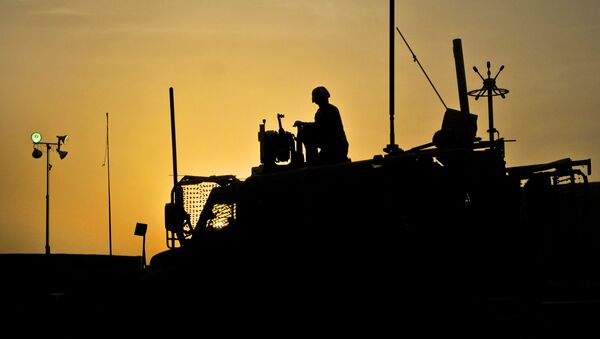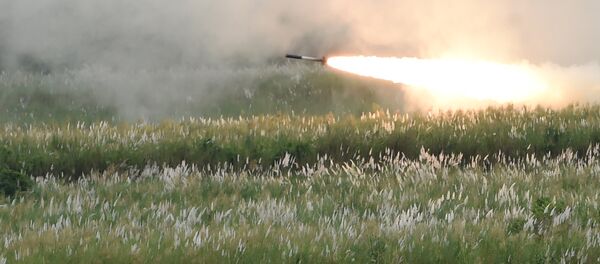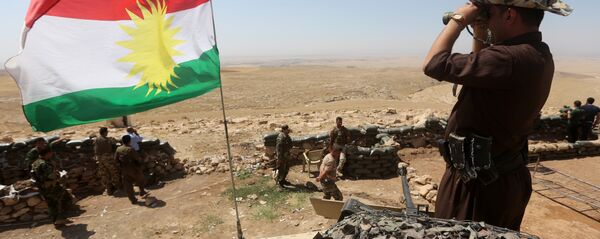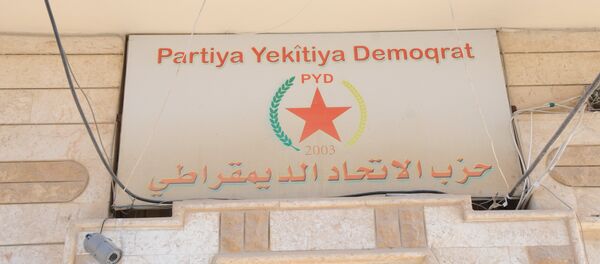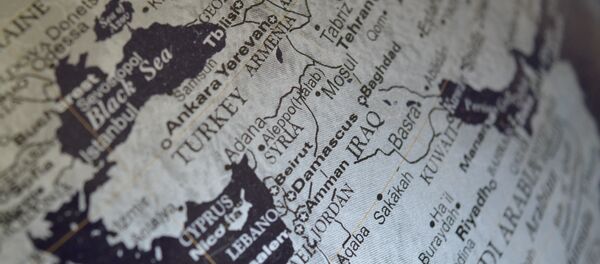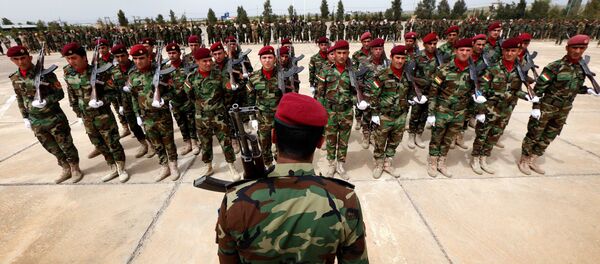Currently, the Syrian Army and its allies are advancing to the east along the Damascus-Baghdad highway, a strategic route in southeast Syria. The highway is also a point of interest for the US-led coalition in the area of al-Tanf, where Syria borders with Iraq and Jordan. The US also has a military base in al-Tanf where opposition forces have been trained.
"The deployment of artillery systems to al-Tanf reveals that the Pentagon sees part of Syria’s territory as its strategic foothold for further offensive on several directions at the same time," Vladimir Lepekhin, a member of Rossiya Segodnya's Zinoviev Club and general director of the EurAsEC Institute, writes in an op-ed for RIA Novosti.
Washington’s Support for Kurds
According to the author, the fight against Daesh has never been the main goal of America’s military presence in Syria. During Barack Obama’s presidency, the priority was to oust President Bashar Assad. The new "pragmatic" strategy run by US President Donald Trump is focused on particular gains, without taking into account Assad and the interests of the Syrian opposition.
While, previously the US relied on Syrian opposition forces, now Washington bets on certain militants groups and Kurdish units.
According to Lepekhin, the US is implementing the project of a Sunni military bloc in the region.
"The previous attempt to form a 'Sunni NATO' failed due to the strategic differences within such countries as Saudi Arabia, Turkey and Qatar. Now, the situation has changed and the US can form a military bloc with its headquarters in al-Tanf or even Deir ez-Zor," he wrote.
The expert suggested that in order to implement the plan the Pentagon will intensify activities in east and northeastern Syria.
Taking into account the fact that Kurdish units will soon take Raqqa and are currently nearing Deir ez-Zor from north, the expert suggested that Washington promised Kurds the northeastern part of Syria, over the Euphrates.
"This territory is supposedly to be the foundation for a sovereign Kurdish state. Since the US has supported Kurds they are likely to be one of Washington’s most loyal allies in the Middle East in the coming years," the article read.
Bargaining Chip
On Wednesday, Turkish Presidential Press Secretary Ibrahim Kalin said that Ankara remains concerned over the activities of the Kurdish People’s Protection Unit (YPG), despite Washington’s statement that the YPG would not use US-supplied weapons against Turkey.
"Kurds are ready to take any chance to establish a sovereign state. As a result, they are voluntarily becoming a bargaining chip in Washington’s strategy aimed at escalating proxy conflicts in the Middle East," Lepekhin assumed.
He added that the strategy presumes the establishment of a "puppet pro-American state, by the example of Kosovo."
Repeat of the Kosovo Scenario?
By contrast, today the Middle East is a region where international law is negated and the Pentagon would need to seek authorization for its military force, according to Lepekhin.
"Of course, the governments of Syria and Iraq are against the division of their territories into several parts. The plan presumes that in order to stabilize the region those countries have to be divided. For example, there is a plan to divide Iraq into three parts. Similar plans have also been reported for Syria," the article read.
The move has faced strong opposition from Turkey, Iran and Iraq.
Responding to criticism, US State Department Spokesperson Heather Nauert told journalists that Washington stands for Iraq’s territorial integrity.
"The United States – and we have talked about this one before – we support a unified, stable, democratic, and a federal Iraq. We understand and appreciate the legitimate aspirations of the people of Iraqi Kurdistan," Nauert said at a press briefing on June 8.
"Apparently, the US will not change its plan for the Middle East and will do its best to implement the plan by proxy," Lepekhin concluded.

